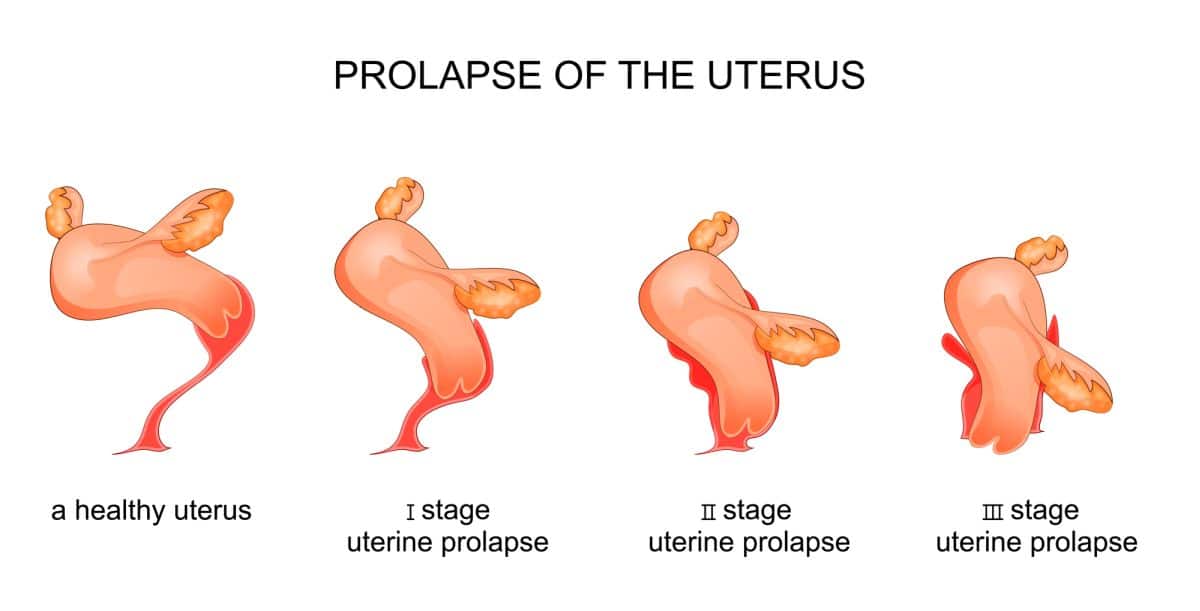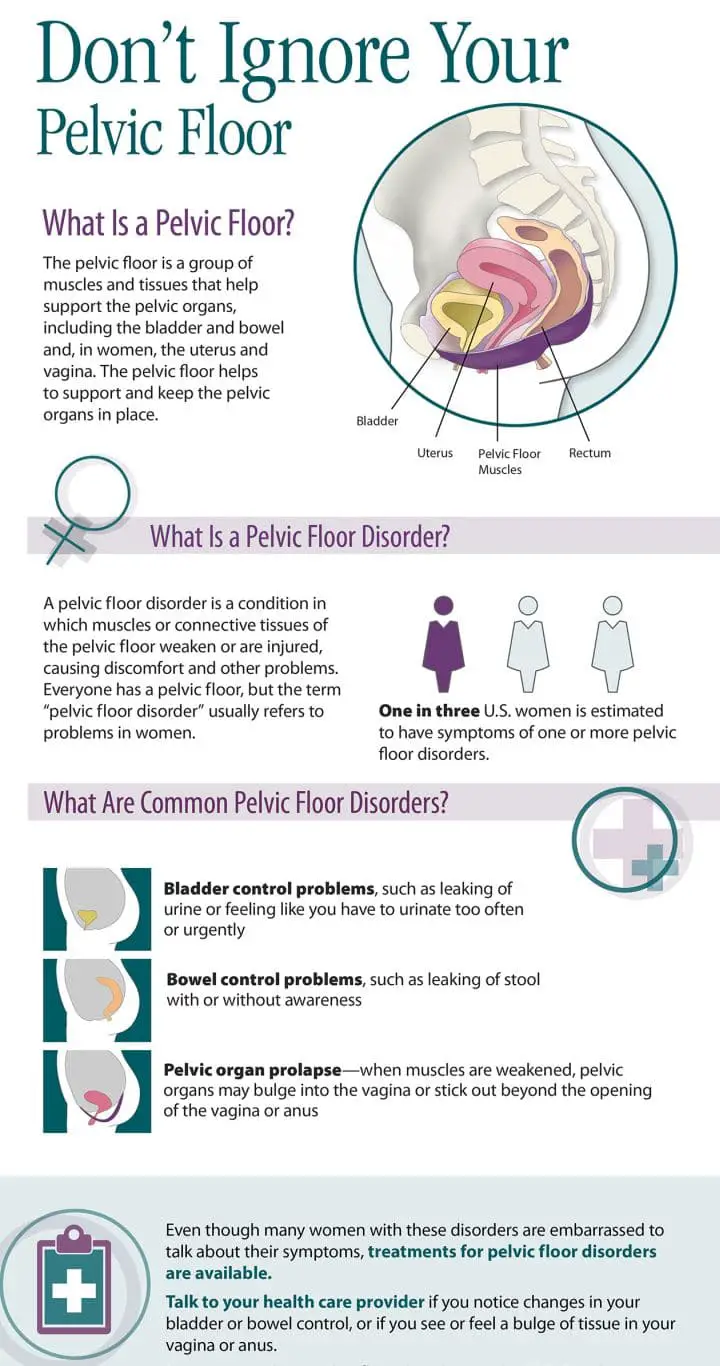Pelvic organ prolapse (POP) is a common condition among females. Pelvic organ prolapse, causes the pelvic organs to descend down. It is also called urogenital prolapse and it can cause protrusion of the uterus or the vagina or both.
Rectal prolapse is also a condition of pelvic organ prolapse which affects both men and women. It causes protrusion of the rectum through the anus1.
Contents
What Are the Causes of Prolapse?
The common risk factors leading to Pelvic organ prolapse are2:
Vaginal or Normal Delivery
During normal delivery, the vagina stretches to an extent, causing dysfunction of the muscles and connective tissue attachment resulting in prolapse. A Cesarean section (C-section) delivery protects women from prolapse whereas forceps delivery advances it.
Age
Pelvic organ prolapse incidence increases with age and can potentially affect every second elderly woman2. With advancing age, the collagen fibers and connective tissues continue to grow weak causing dysfunction of connective tissue attachment to the vagina resulting in prolapse. According to NIH3, women above the age of 60 years had a higher risk of prolapse compared to younger women.
Obesity
An increase in body weight can cause the connective tissues and collagen to stretch beyond a point which it can lead to prolapse. Women with a Body Mass Index (BMI) of more than 25 are at a higher risk of developing this condition.
Hysterectomy
The relative risk of developing prolapse subsequently increases after hysterectomy. However, the condition may develop years after the procedure.
Pregnancy
Irrespective of the mode of delivery in some cases pregnancy has been the cause of this condition. It can be caused due to high infant birth weight of more than 10 pounds, the prolonged second stage of labor or labor at a relatively younger age (under 25 years). Although most women have asymptomatic prolapse and it commonly manifests a long time after childbirth.
You may also like Must Haves After a C-Section
Family History or Genetic Predisposition
Some studies have suggested genetic factors preceding from mother can cause prolapse.
Connective Tissue Disorder
Patients suffering from connective tissue abnormalities have the most commonly reported pelvic organ prolapse due to incapability of attachment to the vaginal wall.
Chronic Constipation
Chronic increase in intra-abdominal pressure and repetitive straining has also caused rectal prolapse. Constipation is both cause and symptom of prolapse.
Occupation
Occupations involving workers to carry out heavy lifting increases the muscle strain causing loosening of collagen fibers resulting in prolapse.
Hormonal Changes
Menopause can lead to prolapse as it causes hormonal changes which reduces estrogen in the body and causes thinning of the vaginal lining. Although such a condition rarely occurs.
In pelvic organ prolapse, the anterior wall is the most commonly affected segment of the vagina causing descent and protrusion of the bladder (cystocoele). The apical wall is the second most commonly affected which involves the uterus or post-hysterectomy vaginal cuff and causes protrusion of either small intestine (enterocoele), bladder, or colon (sigmoidocoele). The posterior wall is least affected which causes rectal prolapse (rectocoele) but can also include the intestine.
You may also like Best Natural Sleep Aid for the Elderly
Prolapse and Sleep
Prolapse can cause poor sleep. And a lack of sleep, especially in the elderly increases their likelihood of falls, memory changes, lack of concentration, and other diseases related to the heart.
It is possible to improve sleep when suffering from prolapse. Using the correct pillows under your knees can help. In some cases, a pillow between the legs or a wedge pillow to raise the legs is known to give additional support as well.
Prolapse Treatment
Prolapse can be treated conservatively or by surgery. The choice of treatment depends on the patient’s choice for surgery, their general health, age, the severity of prolapse, mode of child delivery etc. It also depends on the risk factors associated with it.
Hysterectomy is a leading indication for treatment in postmenopausal women and accounts for 15-18% of procedures in all ages1. Hysterectomy is the removal of the uterus and cervix through the vagina. This causes loosening of other nearby organs which may require other surgeries to fix it.
Evidence has shown surgery may not be very effective for prolapse repair and hence conservative treatment must be considered a method of treatment2. Kegel exercise and mechanical devices are two commonly advised lines of treatment. Mechanical devices mainly include the use of pessaries which can be internal or external.
Check out some Kegel exercise products below from Amazon.
No products found.
You may also like Best Snap Front Robes for Seniors
Pessary
Pessary treatment is the oldest conservatively managed treatment for prolapse, especially in physically frail patients. Pessaries create an artificial base of muscle support and thereby reduce the prolapse. They also elevate the bladder neck back to its normal position and help in the obstructive effect of the urethra.
Pessaries are used to avoid or delay the surgical process, reduce the severity of prolapse symptoms, and thereby prevent prolapse by getting worse. They can also be used as diagnostic tools to check if associated symptoms like void dysfunction and urinary incontinence are corrected by pessary insertion. They can also be used for overflow urinary incontinence.
Pros of a pessary use:
- They are made of medical-grade silicone and hence they last long.
- They can easily be autoclaved (disinfected/cleaned).
- They do not absorb odor or secretions.
- They are made of inert materials causing no harm to the body.
- They can be used by all types and stages of prolapse.
Cons of pessary use
Internal pessaries have some disadvantages too which should be considered.
- In some cases, internal pessaries cause the release of pungent-smelling vaginal discharge which can cause infection.
- Their use for a prolonged period of time can cause vaginal ulcers.
- If not autoclaved timely, they can cause infection.
- They generally need to be fitted by health professionals which increases their cost of use.
Selection of pessaries
Pessaries come in different shapes and sizes i.e. ring, cube, or donut-shaped. The choice of a pessary depends on different stages of prolapse. They should be selected by the patient as per their comfort. The pessary type which best supports the base of the vagina should be an important criterion for selection4. Examples of pessaries are:
- Gellhorn pessary is best used in patients with a history of hysterectomy or patients with a large vaginal opening. They are space-occupying pessaries and are best used in later stages of prolapse. The total vaginal length, the width of the vaginal opening, and the prolapse stage influence the selection of Gellhorn pessary.
- Ring pessary is used in the initial stages of prolapse and provides better support for the organs. The factors determining its size are genital hiatus, vaginal opening width, and the ratio of the vaginal opening to total vaginal length.
- Femicushion for prolapse is an external pessary and it is the best support device if you are looking for something that is non-invasive.
You may also like Best Absorbent Underwear for Adults
Femicushion – Best Support Pessary
Femicushion is an external device that was developed for easier placement and overcome internal pessary drawbacks. They have shown to improve vaginal symptoms and thereby impact the quality of life.
No products found.
Patients using Femicushion have shown improved vaginal symptoms, lower abdomen pain and downward descent of vaginal lump.
Here we have a video that shows how to wear a Femicushion.
Accessory Garments
Apart from pessaries, various accessory garments can be used to support the placement of pessaries and help in the correction of the prolapse. These garments include:
- Supporter: It is a high waist soft garment that gives support to the pelvic organ. It is easily washable and helps in the placement of pessaries
- Flexible belt: They are adjustable straps that are placed above the support garment. They relieve pain by providing good support. They are available with or without compression pads. They are also specially designed to support men’s organs.
- Holder: These are used to help in the placement of pessary. They are compressive pads that absorb any leakage and so prevent any odor or infection.
- Pelvis correction belt: They help in patients who have undergone surgery for correction of the pelvis. It also helps patients suffering from lower back pain.



